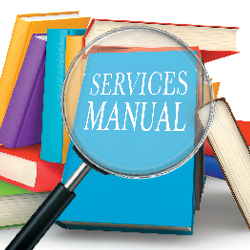|
REGISTRATION REQUIRED
exhibiting 101
 Keep it Clean
When trade shows resume, health and safety will be at the forefront of everyone's minds. Follow this primer to ensure your exhibit exemplifies COVID-era cleanliness. By Betsy Earle
Cleanliness was always crucial on the trade show floor, but as we look forward to expos and events coming back in full force, the topic is more important than ever. Show and venue management, exhibitors, and attendees will need to work together to make sure that the show floor is a safe place for everyone regardless of age and/or general health. While recommendations will no doubt vary between shows and venues, which themselves will be relying on evolving information disseminated from the World Health Organization and the Centers for Disease Control and Prevention, it's not too early to plan for how to keep our booths as sanitary as possible in the COVID-19 era – and revisit some best practices pertaining to cleaning and tidiness.
During the pandemic, I earned my Global Biorisk Advisory Council (GBAC) Trained Technician certification by completing an online course that educates participants on how to prepare for, respond to, and recover from biorisk situations in the workplace. I found the training incredibly informative and eye-opening, and I learned many insights that can be applied to face-to-face marketing programs of any size. If you are interested in learning more about GBAC certification, visit gbac.issa.com. And in the meantime, I've put together the following primer with my top tips on exhibit cleanliness. Work with your exhibit house and/or suppliers to create an easier-to-clean booth environment. A clean exhibit starts long before a show opening by choosing materials conducive to maintaining a sanitary space. If you are printing new fabric graphics, ask if there are options with antimicrobial features and confirm that your selection can be machine washed. Hard-panel infills and laminate fixtures are easy to wipe down on a regular basis during a show, but be sure to inquire about which cleaners are safe to use, especially if any surfaces are printed with custom graphics. And keep in mind that glossier finishes tend to hide streaks (such as those left by a disinfecting wipe) better than matte materials. When it comes to flooring, I suspect we'll be seeing a lot more high-density foam, vinyl, and other solid and smooth options, as these will be easier to thoroughly wash and sanitize on a regular basis – especially for exhibitors that take a DIY approach to cleaning. That said, it's unlikely exhibit carpeting is going away any time soon. However, cleaning isn't just about the dirt you see; it's also about the germs you can't. Therefore, if you go the carpet route, I recommend reviewing the exhibitor manual to see what daily floor-cleaning services will be offered, as COVID concerns may prompt show management and the general service contractor (GSC) to provide more thorough options than a quick after-hours vacuuming. Finally, consider your furnishings. A leather ottoman may be luxe, but one upholstered with a synthetic material will hold up far better to regular wipe-downs. Similarly, make sure that any wood elements, e.g., coffee and end tables, counters, railings, etc., are treated with a finish that will withstand liquid cleaners. Review the cleaning options in the exhibitor-services manual and get your orders submitted on time. Cleaning services in many convention centers are typically handled by either the GSC or a company specific to the venue. If you are looking for someone to clean your flooring during the show, most multiday events offer both vacuum and shampoo service. I like to order vacuum service for the day before the show opens to pick up any dirt and debris from install. As I've mentioned in past columns, it behooves you to order such services before the early bird deadline, as your rate will be discounted by approximately 30 percent compared to ordering on site. Vacuuming is the most common cleaning service listed in the exhibitor manual, but you can always call your show representative or visit the exhibitor-services desk to inquire about other offerings. As stated above, it remains to be seen who will shoulder the responsibility for adhering to what are sure to be more stringent guidelines and standards, so this is one section of the exhibitor manual you'll want to review thoroughly. You will also have the option to order wastebaskets, which will be emptied occasionally throughout the show. These are often referred to as "corrugated wastebaskets," as they're made from folded corrugated cardboard. You'll typically be supplied with a few extra plastic liners, and the grand total will be in the neighborhood of $20 to $40 per receptacle. Most shows allow exhibitors to bring their own wastebaskets, but be aware that they won't be emptied by venue staff if you don't place a service order. If you are involved in an event that generates large amounts of waste, such as a food or food-technology show, remember to order porter trash service, which is typically offered in two- or four-hour increments. Waste porters will routinely stop by your booth, empty your bins into a larger trash receptacle, replace your garbage liners, and ask you to sign off that they've visited your exhibit. Be proactive and come up with an on-site cleaning game plan. The only thing we know for sure right now is that we don't know much about what city, state, and venue mandates will look like in terms of cleaning requirements when shows reopen. That said, there are resources available to help us navigate these unchartered waters and begin to put the framework of an on-site cleaning plan in place. For one, many convention centers, venues, and hotels have earned or are in the process of earning GBAC STAR Facility Accreditation, which means they are maintaining detailed cleaning, disinfection, and infectious-disease-prevention programs. Other trustworthy businesses that have reopened have also enacted similar policies. For example, Disney World has a protocol for sanitizing high-touch areas on a specific frequency. Many of these organizations list their COVID-era policies and practices on their websites. You might be asking yourself "How is this relevant to me as an exhibitor?" Well, face-to-face marketers can replicate many of these businesses' practices, albeit on a much smaller level, by coming up with similar plans for ensuring on-site cleanliness and safety. This document need not be fancy, but it should break down what steps you'll take before, during, and after show hours. Begin by examining your exhibit's floor plan and identifying what areas most people will congregate in and which surfaces will be the most frequently touched. Consider the usual suspects, e.g., countertops, touchscreens, door handles, etc., as well as under-the-radar hot spots such as chair arms, doors themselves (not everyone uses a handle, after all), and shelves where products are displayed. Then determine both 1) how you will disinfect each surface, e.g., disinfecting wipes, spray cleaners, a UVC light wand, etc., and 2) at what interval you will perform this cleaning. A surface such as a reception-desk countertop could warrant disinfecting every 20 or 30 minutes, while the doorknob to a seldomly accessed storage closet may only need a twice-daily wipe. Although your plan may need to be modified once you learn what guidelines a particular show has put in place, you've still set yourself up for success by putting pen to paper sooner rather than later. Arm yourself with the right supplies – and use them correctly. All cleaners are not created equal, and having the right supplies in your arsenal is half the battle. During my GBAC training, I learned that the words "cleaning," "sanitizing," and "disinfecting" are not interchangeable, and in some cases the terms are regulated by the government. By definition, cleaning is the physical action of removing germs, dirt, and debris from a surface using detergents and soaps. Therefore, cleaning products don't necessarily kill germs but rather remove them so they can be disposed of, as in dumping dirty mop water or tossing soiled paper towels. Sanitizing involves both removing and killing at least 99.9 percent of germs. Lastly, disinfecting means killing 100 percent of the microorganisms on a surface. In order for a cleaning product to be defined as a disinfectant by the Environmental Protection Agency, it must kill all germs except those that are in spore form. Another important matter to consider is dwell time. No, in this context I'm not referring to the time attendees linger in your exhibit, but rather how long a cleaning agent needs to sit on a surface. This information can be found on the product's label. For example, the label for a popular multipurpose cleaner says the product needs to be on a surface for one minute to sanitize it and six minutes to disinfect it. The front of another household cleaner boasts that it "Kills 99.9% of viruses and bacteria.**" Find the asterisked footnote on the back, and you'll see the product needs a full 10 minutes to do what it claims. To put it another way: A perfunctory spray and wipe with most "powerful, germ-killing" cleaners won't get you as close to godliness as you may think. You'll also want to pack plenty of gloves and disposable wipes and/or paper towels for your cleaning endeavors. Although paper towels are less environmentally friendly than cloth rags, rags can harbor germs. If you want a clean environment, you need to use clean tools. Cleanliness is a team effort, and we can all help to accomplish this goal. A hygienic trade show floor keeps you, your colleagues, and your customers safe, and following these tips will contribute to just that. E  Betsy Earle, CTSM
Betsy Earle, CTSMmanaging director and founder of Event Driven Solutions LLC. Earle obtained her MBA at the University of Miami and earned her Diamond-level CTSM designation in 2018. Exhibiting101@exhibitormagazine.com
|
|
|
||||||||||||||||||||||||||||
|
|
||||||||||||||||||||||||||||
|
TOPICS Measurement & Budgeting Planning & Execution Marketing & Promotion Events & Venues Personal & Career Exhibits & Experiences International Exhibiting Resources for Rookies Research & Resources |
MAGAZINE Subscribe Today! Renew Subscription Update Address Digital Downloads Newsletters Advertise |
FIND IT Exhibit Producers Products & Services All Companies Get Listed |
EXHIBITORLIVE Sessions Exhibit Hall Exhibit at the Show Registration |
ETRAK Sessions Certification F.A.Q. Registration |
EDUCATION WEEK Overview Sessions Hotel Registration |
CERTIFICATION The Program Steps to Certification Faculty and Staff Enroll in CTSM Submit Quiz Answers My CTSM |
AWARDS Exhibit Design Awards Portable/Modular Awards Corporate Event Awards Centers of Excellence |
NEWS Associations/Press Awards Company News International New Products People Shows & Events Venues & Destinations EXHIBITOR News |
||||||||||||||||||||
|
||||||||||||||||||||||||||||






